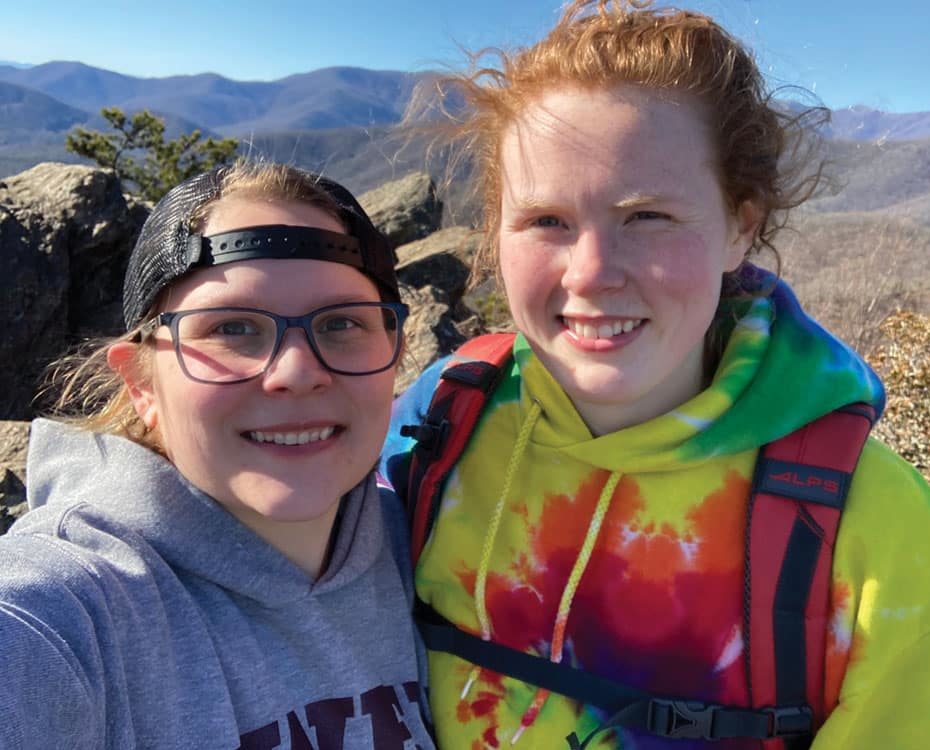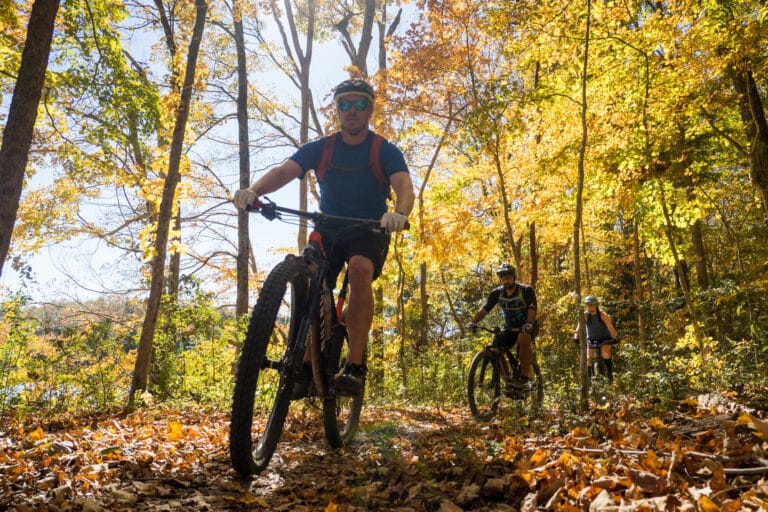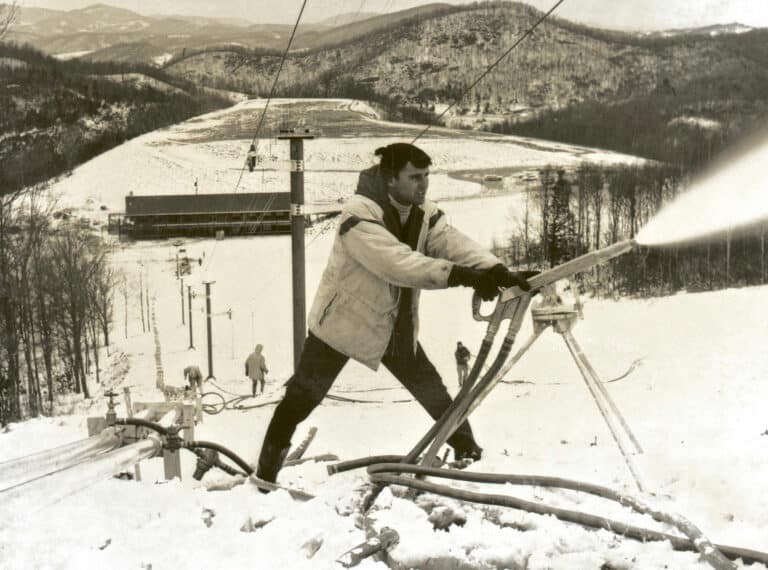It’s really hard to stop peeing.
Even when you realize a timber rattler is slithering just inches from your bare buttocks, it takes some real restraint to pause the stream and pull up your muggy trousers. I know firsthand.
Last July, my wife and I had a random Saturday off. She’s a chef, so we almost never get a free weekend together. When we do get time to explore, it’s usually a random weekday when most 9-to-5’ers are in the office. All this to say, we had yet to witness the pandemic-driven outdoor boom until we pulled up to find a historically overlooked trailhead in North Carolina’s Pisgah National Forest teeming with long-haired brahs and fetid summer campers. We let out a collective grunt.
Intent on squeezing all the life we could out of the day, we started hiking anyway. But as soon as we gained momentum, 20-somethings in sandals and couples with toddling kiddos would round the corner, forcing us to step off the trail. The hike continued like a UPS delivery route—stop and start, stop and start—and as the miles dragged on, I could feel my bladder squirm.
“I really have to pee,” I whispered to my wife as a gray-haired man smelling of dryer sheets squeezed by us, trampling a patch of jewelweed. We had two choices: turn around and head back to the car, hoping I didn’t spontaneously combust on the 40-minute drive home, or find a spot where maybe, just maybe, droves of boy scouts wouldn’t catch a glimpse. We opted for the latter.
But as we continued plodding down the path, people seemed to magically multiply. Each switchback gave way to a family of five or a solo adventurer with a soggy bloodhound. The hike was starting to feel like one of those nightmares where you need to wee but every bathroom stall is the chokey from “Matilda.”
At my wit’s end, I ran for an overgrown side trail used by hunters each fall. After a few hundred yards, I unzipped my pants and squatted, too drunk on urea to care what or who was around. But just seconds into my blissful release, movement caught my attention. As the understory undulated in my direction, I hoped for a curious rabbit or a virile chipmunk. But all hopes were squashed when my companion presented herself, first as a triangular head with narrow eyes and then as a brawny, tubular body as thick as my arm.
I watched as the snake glided through knotted brambles within spitting distance, its rattles shaking from the effort. The seconds slowed as I considered the misfortune of a bite to the buttcheek. There’s the possibility of muscle weakness, labored breathing, organ failure, and, of course, death. But, if I did survive, there would also be the danger of footing an enormous hospital bill. For a cheapskate who wears the same bedraggled underwear for years because new ones are “too expensive,” this was a wake-up call. Eyes fixed on the rattler, I stopped my stream, halfway pulled up my pants, and stumbled backward to the main trail, breathlessly explaining the mishap to my wife once we reconvened.
We left after that, but not because the rattlesnake encounter felt too untame. We often spot snakes—venomous and otherwise—on our hikes and love watching as they float across the forest floor. Rather, we left because our presence, along with that of seemingly hundreds of other people, disturbed the wildness of that space.
For better or worse, the pandemic has forced many of us to rethink our hobbies. People who previously spent weekends bar hopping and shopping are now mountain biking and hiking. I love that. I love that the collective pause of quarantine underscored the merits of wilderness and solitude. But when we all flock to the same trailhead, there is no wilderness and there is no solitude.
That fortuitous Saturday reminded me of why I prefer to explore the footpaths of western North Carolina in the dead of winter. Sure, the likelihood of urinating near a highly venomous serpent nosedives when it’s 20 degrees outside. But colder weather also deters many folks from venturing past the couch, meaning there are fewer people to catch you cowering like a doe-eyed Labrador, blubbering about failed romances, cursing the divisiveness of our country, or engaging in any other cathartic act. Because, for me at least, that’s what hiking is about—release.
I didn’t start truly hiking until my early 20s. It was December and I had just graduated from college. I hated my job and aspired to get as far away from the dimly lit confines of my cubicle as possible. I found myself daydreaming about these long, circuitous walks my dad took me on as a kid. I would be drowning in one of his orange hunting jackets as he pointed out deer sign along the Big Hungry River. “That’s a big’un,” he would say, pointing at an oak sapling that had been gnarled by a buck’s antlers. I would nod halfheartedly, more interested in how free this soft-spoken world made me feel.
A decade later, I craved that feeling again. So I hiked, cautiously at first and then ravenously, disappearing for days at a time. I developed a fascination with the colder months when the leaves are rimed with snow and the soil heaves an icy sigh. In winter, it’s just you, the mountains, and this bone-deep feeling of solitude. The world seems bigger because you’re uninhibited. You can hike and cry and laugh and just exist. But most importantly, you can pee.
Cover photo: The author (right) and her wife on a windswept mountaintop. Photo courtesy of the author








